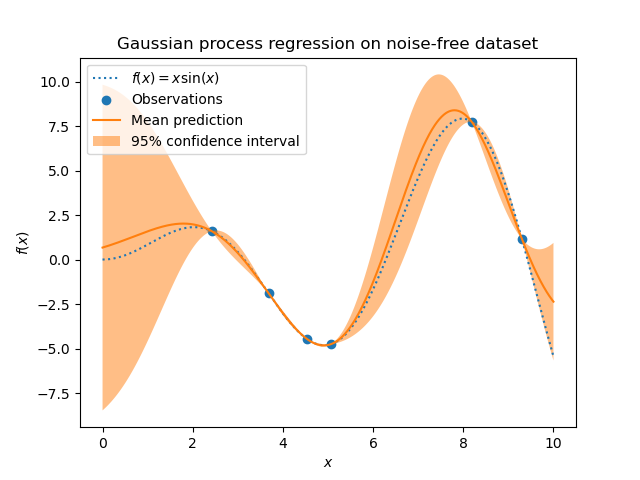Gaussian Process Classification explanation
Introduction
A Gaussian Process Classification (GPC) is a type of probabilistic model that is primarily used in the field of machine learning. This classification model is non-parametric, meaning that it makes no assumptions about the underlying data distribution.
GPC models are quite useful due to their ability to provide not only the classification results but also the associated uncertainties, finding its purposes in various fields of classification tasks.

Figure: Illustration of Gaussian Process Classification.
Python Explanation
Below is an example implementation of GPC in Python using the scikit-learn library.
from sklearn.datasets import load_iris
from sklearn.gaussian_process import GaussianProcessClassifier
# Load dataset
iris = load_iris()
# Initialize Gaussian Process Classifier
gpc = GaussianProcessClassifier(random_state=0)
# Fit the model
gpc.fit(iris.data, iris.target)
# Perform prediction
predictions = gpc.predict(iris.data)
Advantages
-
Uncertainty Estimates: GPC models provide probabilistic predictions, which include uncertainty estimates. This is useful in scenarios where it's important to know the certainty of the prediction.
-
Non-Parametric: GPC models do not presume any specific underlying data distribution, making them dependable for various data distributions.
-
Versatility: They can be used for both regression and classification problems.
Disadvantages
-
Computational Complexity: GPC's main disadvantage is its computational complexity. Especially when dealing with large datasets, the computational expense can become quite significant.
-
Difficult to Scale: Due to its computational cost, GPC models are difficult to scale on large datasets.
-
Sensitive to Noise: GPC models may be quite sensitive and react to observations contaminated with noise.
When to Use
GPC models are suitable for smaller datasets or when versatile, probabilistic predictions with uncertainty estimates are needed. They are especially useful in scenarios where the data is presumed to have a local structure.
Examples of typical applications include,
- Forecasting in various fields such as climate, finance or sales
- Robotics for localization, mapping and path planning
- Bioinformatics for protein secondary structure prediction
- Medical diagnosis, a probabilistic outcome might be essential in the decision-making process.
In summary, GPC is a powerful tool for probabilistic modeling and is valuable in machine learning when predictions with uncertainty estimates are helpful.
Conclusions
In conclusion, Gaussian Process Classification is a versatile machine learning model that while having some disadvantages such as computational complexity, offers valuable capabilities such as providing probabilistic predictions with associated uncertainty estimates. It can be effectively utilized on smaller datasets and when the certainty of predictions is of importance.